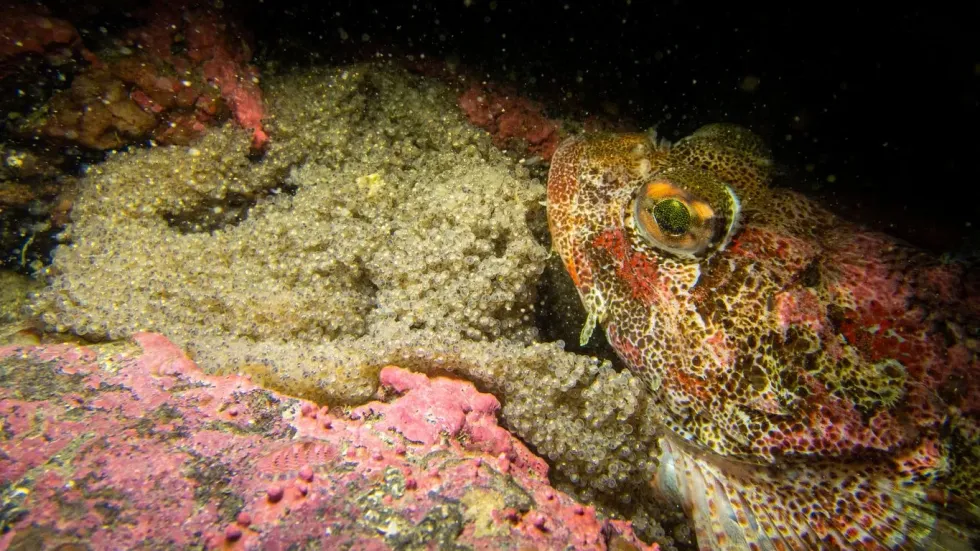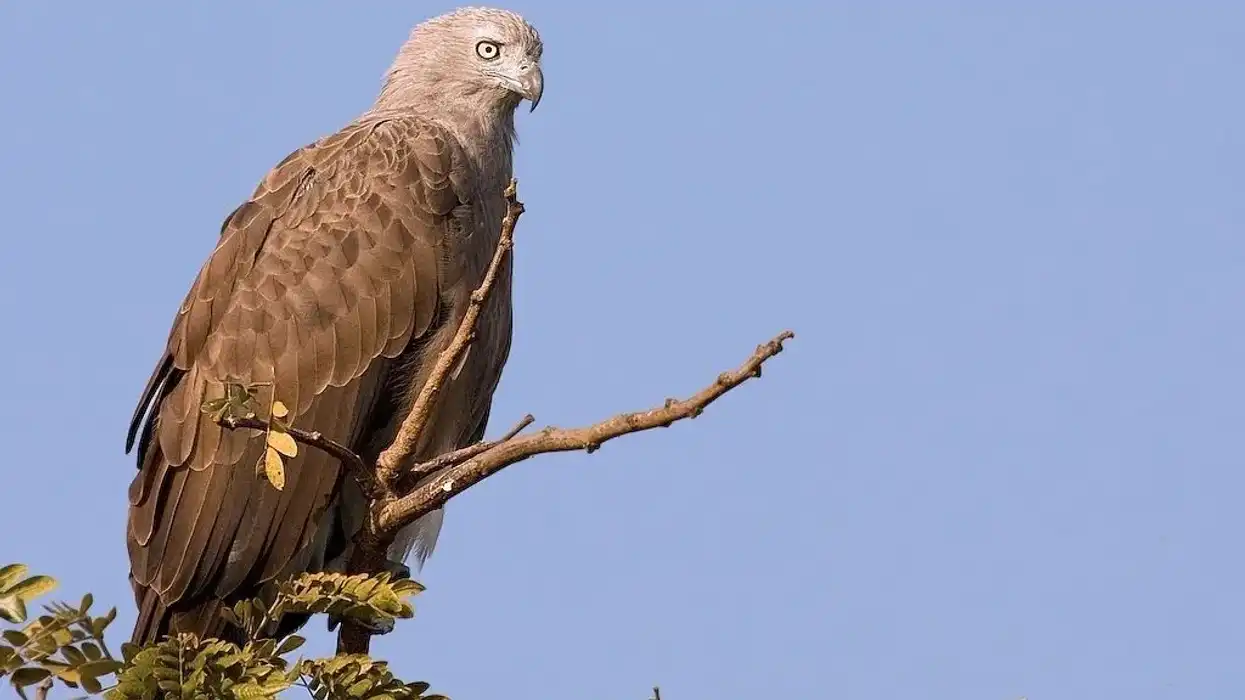Great sculpins are a species of fish belonging to the Cottidae family. This fish is considered to be the largest species of the genus Myoxocephalus, in terms of its weight and length.
They inhabit the Bering Sea and the Washington coast of the North Pacific Ocean. They are also found in parts of Japan and Russia.
These fishes reside in aquatic habitats comprising both saltwater and freshwater, unlike the mottled sculpin which is a closely related species that resides solely in freshwater. They are usually found on sandy or muddy surfaces, located at the bottom of the marine ecosystem.
The breeding season of these fishes occurs in January and February. Female fishes lay around 11,000 eggs which are fertilized externally through spawning.
The young eventually hatch out of the eggs after successful fertilization. The males mature at five to six years of age, while the females mature at seven to eight years of age.
The great sculpin (Myoxocephalus polyacanthocephalus) is Not Evaluated by the International Union for Conservation of Nature or IUCN Red List. However, the destruction of their habitat and climate change are a few of the major threats encountered by this species.
If you liked reading this article, then do check out the greasy grouper and giant frogfish.
Great Sculpin Interesting Facts
What type of animal is a great sculpin?
The great sculpin (Myoxocephalus polyacanthocephalus) is a species of fish that belongs to the Cottidae family. It is mostly found in the North Pacific Ocean and is a member of the genus Myoxocephalus.
What class of animal does a great sculpin belong to?
This species belongs to the class Actinopterygii. These fishes belonging to this class are commonly known as ray-finned fishes.
How many great sculpins are there in the world?
The exact number of individuals present in the world is not known. They are mostly found in the North Pacific Ocean.
Where does a great sculpin live?
This species is mainly found in the Pacific Ocean region of North America. Its range extends from the coast of Washington to the Bering Sea, a marginal sea belonging to the North Pacific that separates the continents of Asia and North America.
This fish also resides in the Aleutian Islands, a range of islands located in the state of Alaska. Its breeding grounds include the Kamchatka peninsula in Russia, which represents the eastern part of its range.
A great sculpin is also present in Puget Sound, an inlet of the Pacific Ocean. Some of these fishes are also found in Japan in East Asia.
What is a great sculpin's habitat?
This species usually prefers sandy or muddy bottoms present in an ocean or sea. This fish is found in both freshwater and saltwater bodies, unlike the mottled sculpin which is a closely related species residing solely in freshwater throughout its range.
It is a bottom-dwelling fish and found at depths of 787.4 ft (240 m) below sea level. It can also be found in inlets and estuaries. This fish inhabits aquatic habitats with temperate climatic conditions.
A great sculpin often resides in shallow reefs, also known as the rainforest of the sea, forming an important part of the underwater ecosystem. This fish is found in both intertidal and subtidal zones of large water bodies having tidal influence.
Who do great sculpins live with?
These fishes are known to live in solitary. However, it can be assumed that during the breeding season they are found in pairs or groups.
How long does a great sculpin live?
The average lifespan of the great sculpin fish is yet to be determined. However, the oldest reported age is recorded at 16 years.
How do they reproduce?
The breeding season of this species occurs in January and February. Female fishes lay around 11,000 unfertilized eggs and deposit them in shallow coastal waterbodies.
Fertilization occurs externally through spawning and male fishes are known to guard the eggs. After successful fertilization, the young eventually hatch out of the eggs. The males attain reproductive maturity at five to six years of age, while the females mature at seven to eight years of age.
What is their conservation status?
The great sculpin (Myoxocephalus polyacanthocephalus) is Not Evaluated by the International Union for Conservation of Nature or IUCN Red List. However, the destruction of their habitat and climate change are a few of the major threats encountered by this species.
Great Sculpin Fun Facts
What do great sculpins look like?
Great sculpins have a large body with a tapering end. They are considered to be the largest species of the genus Myoxocephalus. They have a large head with a patch of papillae forming bump-like structures.
The fleshy papillae on the head are made up of modified scales. Their body consists of an olive-green coloration and their undersides are paler than the rest of the body. One unique characteristic of these fishes is the absence of scales.
The coloration of this species might differ according to their habitat. Their cheeks have long spines protruding outwards and the pectoral fins located on their sides have a fan-shaped structure.
The underside of the fins consists of sharp rays that help when gripping the surface. These fins primarily help them in their underwater movement. They do not have swim bladders.

* Please note that this image is of a sailfin sculpin, not a great sculpin. If you have an image of a sailfin sculpin, please let us know at hello@kidadl.com
How cute are they?
Their cuteness usually stems from their appearance. The presence of long spines, pectoral fins, large heads, and olive-green coloration make them cute.
How do they communicate?
They communicate through producing sounds of lower frequency. The absence of a swim bladder prevents them from participating in auditory communication through pressure sensitivity. Their eyes also help in perceiving the surroundings.
How big is a great sculpin?
The average great sculpin size is around 31.4 in (80 cm) in length. It is smaller than a codfish which is around 51 in (129.5 cm) in length.
How fast can a great sculpin swim?
The exact speed of this fish is not known. It mostly stays at the bottom of the ocean and moves by using its pectoral fin.
How much does a great sculpin weigh?
The weight of this fish is around 19.8 lb (9 kg) on average. It is slightly heavier than milkfish, found across the Pacific Ocean which are 16-17 lb (7.7 kg) in weight.
What are the male and female names of the species?
Scientists do not have specific names to refer to the male and female species of great sculpins. They are commonly known as male great sculpins and female great sculpins.
What would you call a baby great sculpin?
Baby great sculpins are commonly known as fries.
What do they eat?
They are known to be predatory fishes. They feed on a large variety of small fishes, crabs, worms, amphipods, and crustaceans found in the aquatic habitat. These fishes are nocturnal and search for their prey at night.
Are they poisonous?
Yes, they are considered to be poisonous. Their spines contain venom and might cause allergic reactions if it comes into contact to human skin. The venom can damage the tissues present inside the body.
Would they make a good pet?
This fish can make a good pet. It has to be kept in aquariums with ice-cold water.
Did you know...
Great sculpins belong to the genus Myoxocephalus. Its names is derived from the Greek word 'myos', meaning 'muscles' and 'kephale', meaning 'head'.
Can you eat sculpin fish?
Yes, sculpins can be eaten and are known to have a great taste. However, their spines should be removed before cooking as they contain a poisonous venom.
What animal eats great sculpins?
Their predators mainly include big fishes like trouts, freshwater fish of the Salmonidae family, and burbots, a gadiform or cod-like fish. Their aerial predator mainly includes herons. They often fall prey to otters and raccoon dog.
Here at Kidadl, we have carefully created lots of interesting family-friendly animal facts for everyone to discover! Learn more about some other fish from our brown trout facts and Japanese amberjack facts pages.
Here at Kidadl, we have carefully created lots of interesting family-friendly animal facts for everyone to discover! You can even occupy yourself at home by drawing one on our Great sculpin coloring pages.










